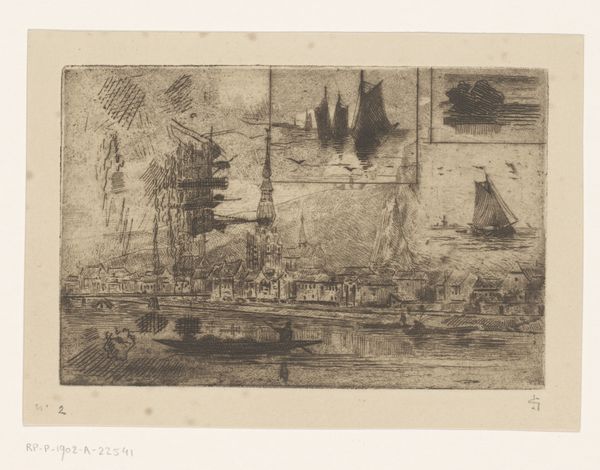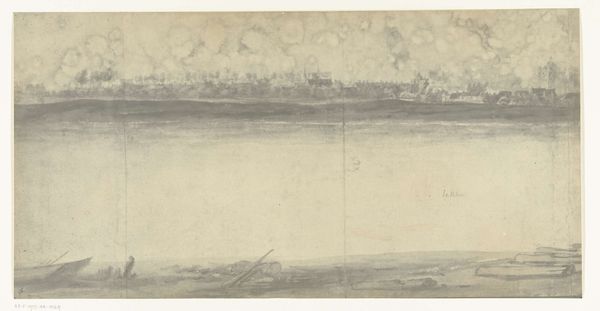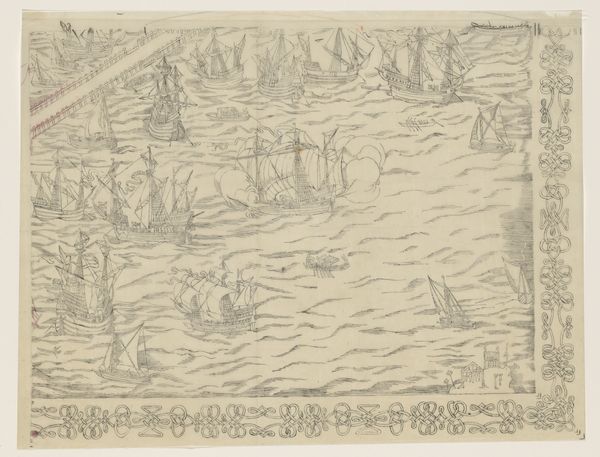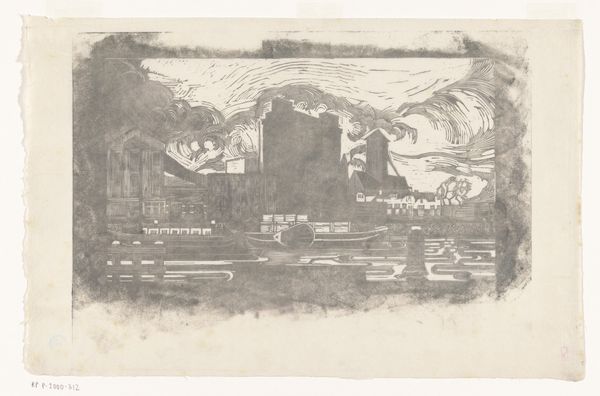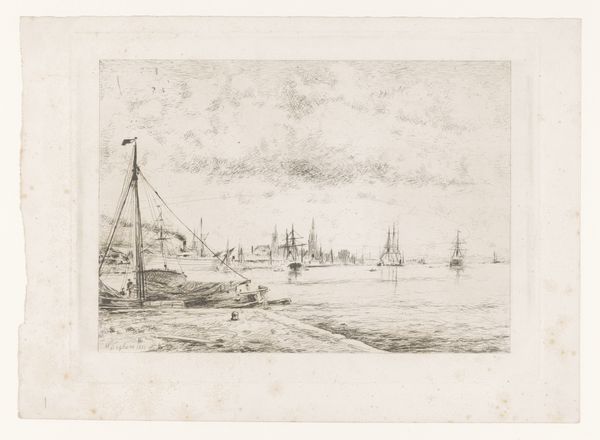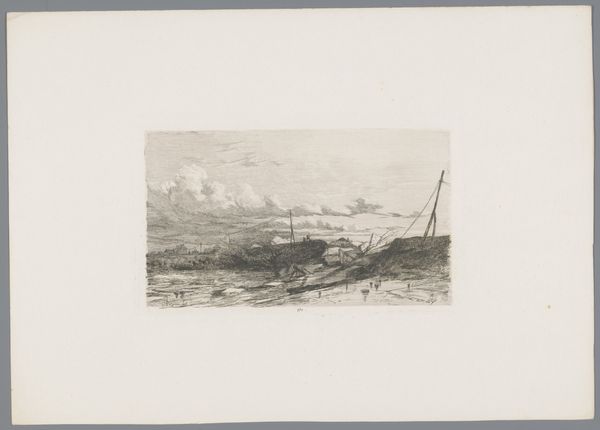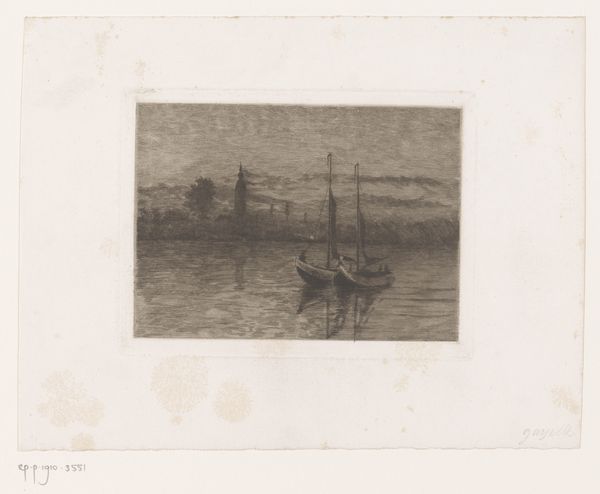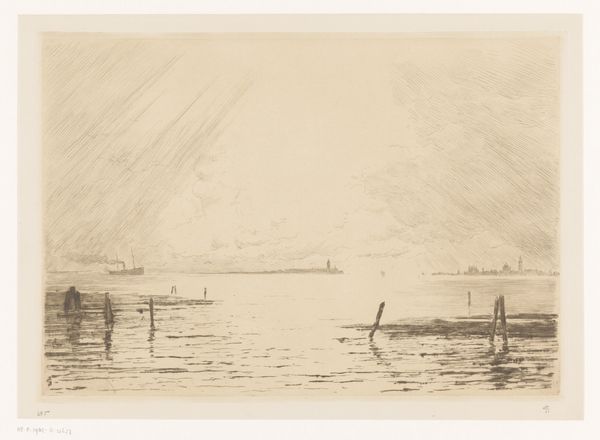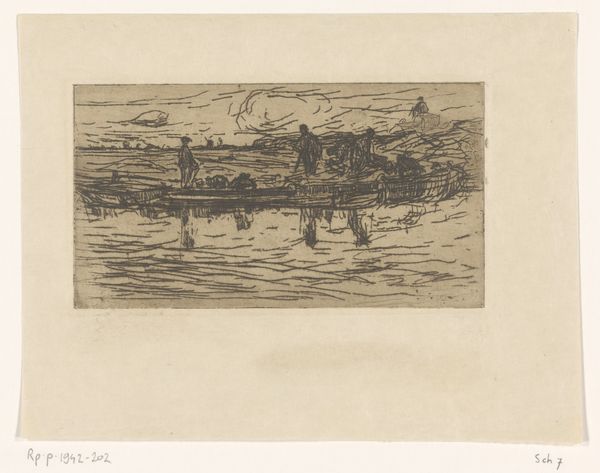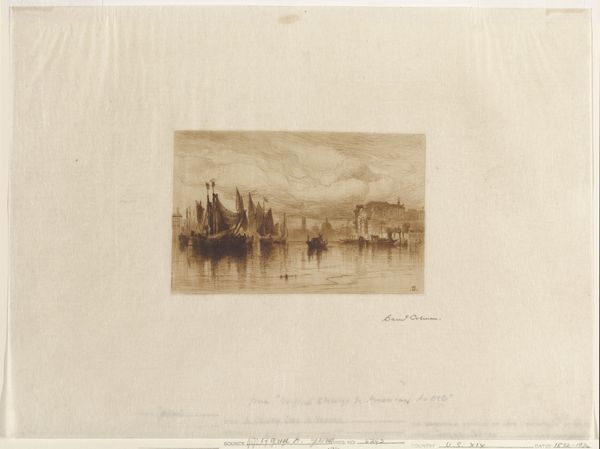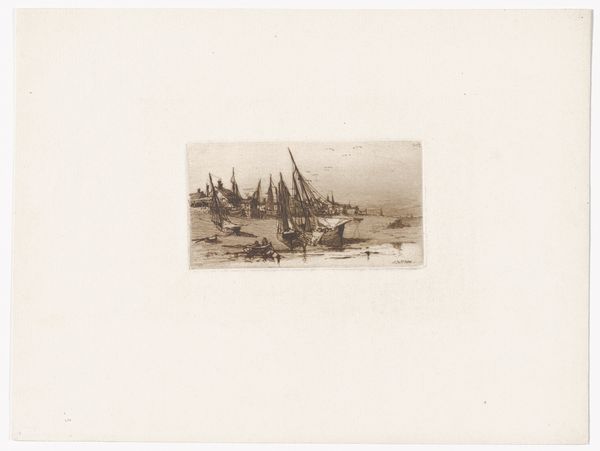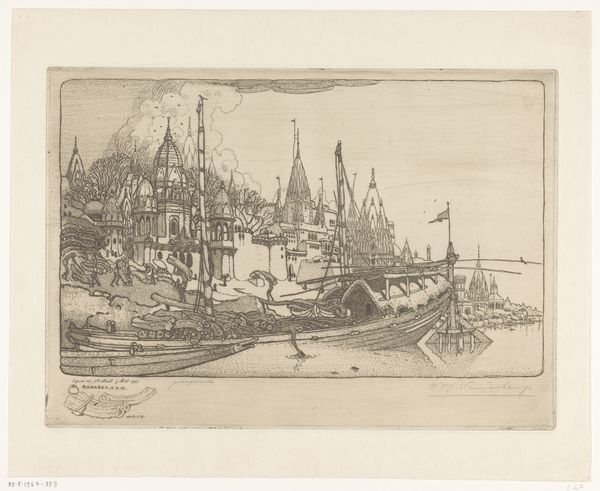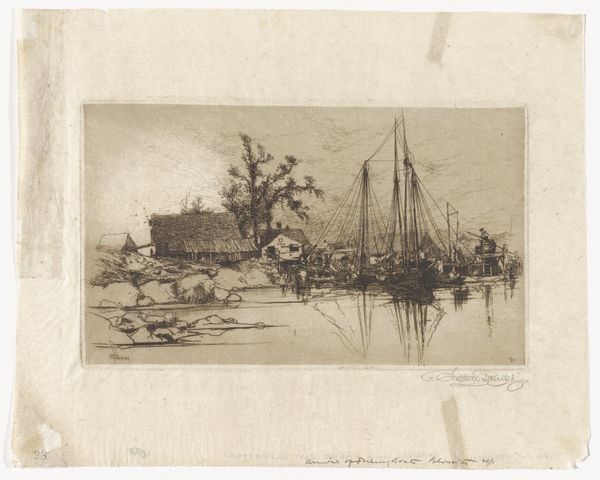
print, etching
# print
#
impressionism
#
etching
#
old engraving style
#
landscape
Dimensions: height 247 mm, width 359 mm
Copyright: Rijks Museum: Open Domain
Curator: This etching by Félix Hilaire Buhot, made in 1886, is called "View of a Harbor with Ships and Seagulls." Editor: It feels so atmospheric, almost dreamlike. The details around the edges especially—the framing is really intriguing. Curator: Buhot was deeply engaged with printmaking as a craft and artistic endeavor. Look closely, and you'll notice he doesn’t limit himself to a single, contained image. The central harbor scene acts as a window into another time, framed by a more fluid rendering of similar elements: ships, seagulls, suggestive of a continuous maritime world. Editor: It challenges our contemporary ideas about the borders between art and design, as if Buhot treats the entire plate as a canvas for his observations. How do you see that connection between the materials and the final piece? Curator: For Buhot, printmaking allowed for incredible flexibility. He combined different techniques like etching and aquatint to achieve a wide range of textures and tones. This allows him to really delve into capturing the fleeting qualities of light on the water. The whole network of artistic creation, in the sense that he emphasizes artistic work. Editor: Absolutely. Thinking about this being on display here at the Rijksmuseum, I’m struck by how Buhot pulls us into this historical scene. What role did harbors like this play at this time? Curator: Harbors were the lifeblood of trade and communication. Buhot is showing us a working harbor, full of activity. It’s not a romanticized view. There’s smoke coming from the ships, and a palpable sense of labor. This really represents a bustling economic engine, something critical to understand 19th-century life in the Netherlands. Editor: It’s a valuable glimpse into the economic and social landscape of the era. He uses the image of a common landscape to reveal historical patterns, and the power of the docks. Curator: And in Buhot's creative process, he elevated the daily material experiences of maritime activity to the realm of fine art. Editor: Well, I’m seeing the value in revisiting an era to find an image of hard-working, innovative design—great artwork opens us to the culture around us, through material investigation.
Comments
No comments
Be the first to comment and join the conversation on the ultimate creative platform.
